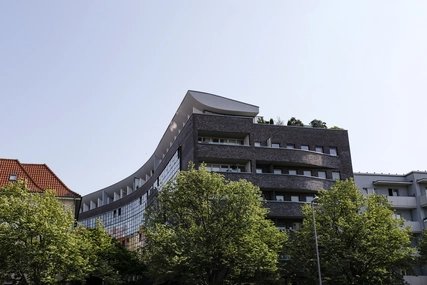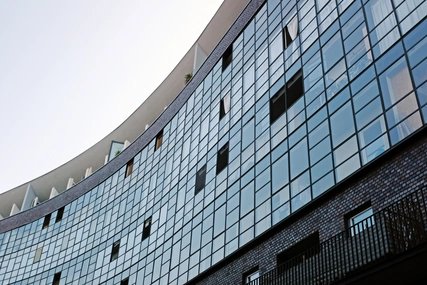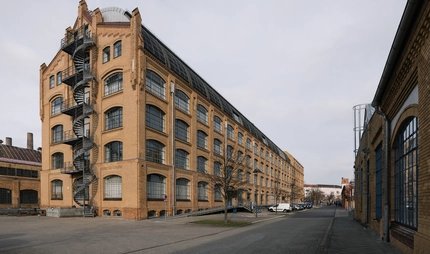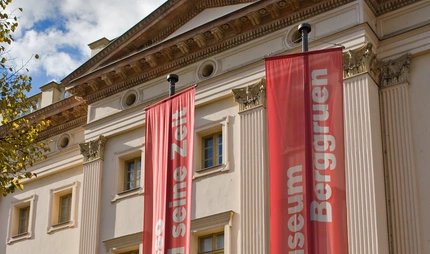
Living at Luisenplatz
Cautious urban renewal
In the post-war period, the Berlin Senate wanted to create new, modern living spaces. A generation later, however, this approach came to an end.
More than any other project, the International Building Exhibition Interbau 1957 stands for modern urban renewal in West Berlin. A completely new district replaced the destroyed 19th century buildings in the Hansaviertel.
However, starting in the 1970s, resistance to large-scale construction projects grew; many renovation measures were called into question by citizens. The 1987 International Building Exhibition (IBA) was an expression of this social change. Instead of designing new housing estates, architects started to renovate old buildings and closed gaps in the cityscape left behind by the Second World War.
One of the IBA projects was the redesign of Luisenplatz in Charlottenburg. This was a special challenge because the square is located in the immediate vicinity of Charlottenburg Palace. Next to the venerable historic palace, the new residential buildings should not look completely alien, but should not imitate its architectural style either.

Reference to classicism
The overall design by the architects Andreas Brandt, Rudolf Böttcher and Yadegar Asisi won the Senate's competition for ideas. It consisted of four different subprojects. Brandt and Böttcher themselves, together with Horst Hielscher and Georg-Peter Mügge, planned the residential building at Charlottenburger Ufer 1. It fits into the existing development and consists of seven sections, each with a separate entrance.
The seven sections look the same at first glance, but the architects gave them – especially the entrances – an individual touch. Common to all parts of the residential building are classicist elements such as portrait format windows and small columns in the façade – a homage to the New Pavilion built by Karl Friedrich Schinkel in 1824/25 on the other side of the Schlossbrücke bridge.
The building at Eosanderstraße 21 also uses classicist elements. Here Brandt and Böttcher designed the façade of the upper floors symmetrically with portrait format windows. The shops on the ground floor are divided by colonnades. The building blends in harmoniously with the historic grounds of the Charlottenburg Palace and at the same time separates Luisenplatz from the traffic.
References to the classic modern age
The focal point at Luisenplatz is Hans Kollhoff's residential building with its striking brick and glass façade at Otto-Suhr-Allee 144. Kollhoff plays with elements from architectural history, but it does not refer to Baroque or Classicism, but to the master builders of Classical Modernism. The blue-coloured bricks are reminiscent of the work of Erich Mendelsohn, the glass façade over four storeys is a reference to the work of Walter Gropius, and the white flying roofs reminds one of Le Corbusier.
However, Kollhoff's building also fits into the ensemble at Luisenplatz. It is not only in tune with the height of surrounding buildings, but also covers an existing firewall with its two lines. The architect also aimed to integrate the glass façade into the urban environment. In this way, it was intended to “mediate between the privacy of the residential building and the public character of Luisenplatz and the palace”.

Our tips for the area around Luisenplatz
In the immediate vicinity of Luisenplatz you will find Charlottenburg Palace with its magnificent Baroque garden and the New Pavilion. You can discover other buildings of the International Building Exhibition (IBA) in Alt-Tegel, in Ritterstraße, on the Fraenkelufer and in Charlottenstraße.
Practical information from visitBerlin
The residential area at Luisenplatz can be reached by taking U-Bahn line 7 to Richard-Wagner-Platz. For the IBA buildings in Alt-Tegel take U-Bahn line 6 to the terminus of the same name; for the residential complex Ritterstraße Nord and the residential tower in Charlottenstraße take U-Bahn line 6 to the stop Kochstraße/Checkpoint Charlie; for the residential buildings on Fraenkelufer take U-Bahn line 8 to Kottbusser Tor.
To explore the city, we recommend the Berlin Welcome Card for public transport.



